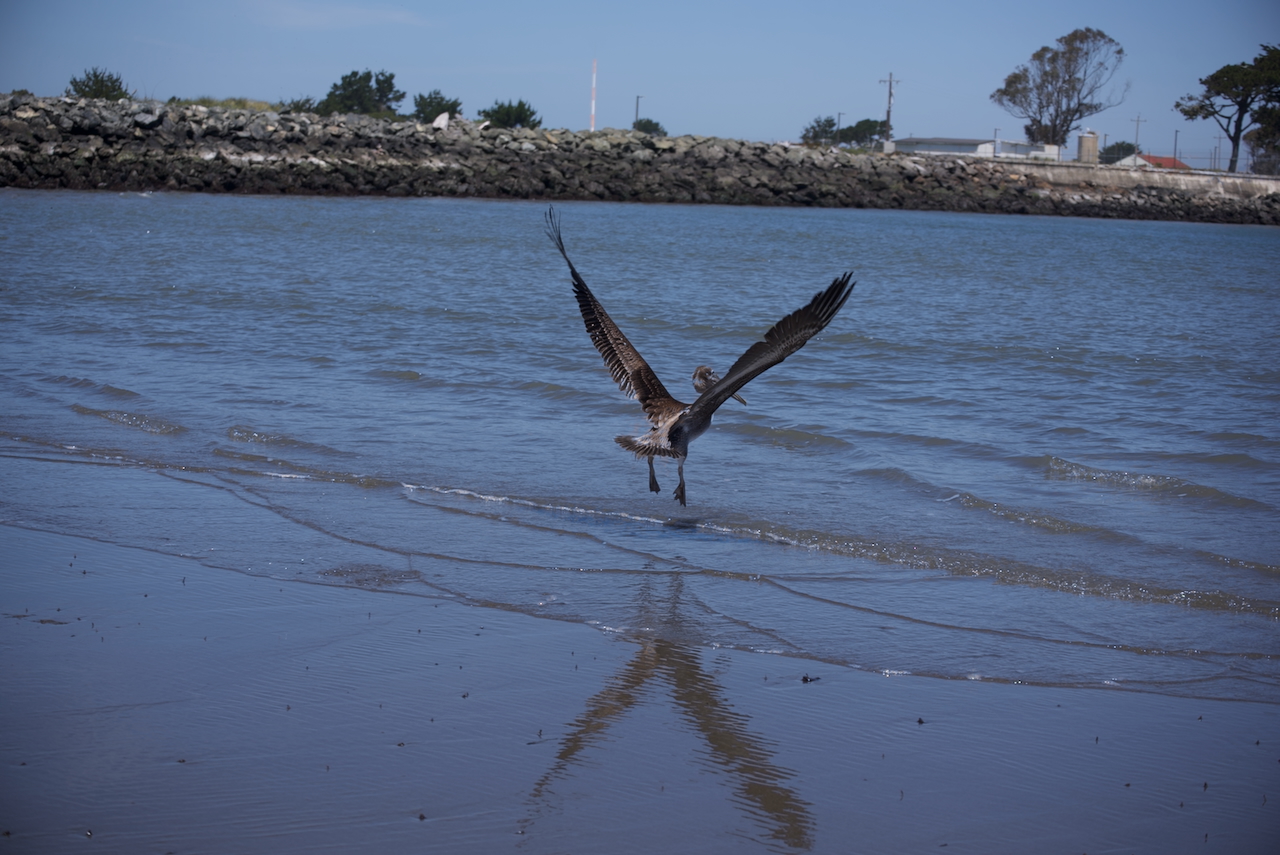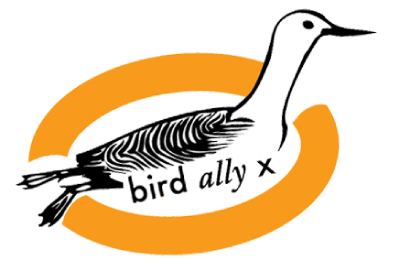
One thing that used to be true in the olden times was that seasonal events were predictable. Now the the youngsters today may find this hard to believe but naturalists from 30 years ago might’ve known what day a certain woodland plant bloomed and made a trek to be there to see it happen.
While the stars and planets might still adhere to regular returns, natural cycles on Earth seem to be increasingly irregular. Of course, the best science of our time and back nearly forty years has predicted exactly this, so it’s not a surprise overall that seasonal events are harder to predict, but when we admit hatching year Brown Pelicans (Pelecanus occidentalis) in the middle of April, here on the the North Coast, a month earlier than we ever have before, it’s remarkable.
Ten years ago, mid to late June was the earliest we would see recently fledged Brown Pelicans, who must make the roughly 500 mile flight from the nearest breeding ground in the Channel Islands, to arrive in Humboldt County.
Fifty years ago, Brown pelicans in California began their breeding season in mid March – the pelican breeding season coincides with the arrival of their food source, primarily anchovies. In fact breeding may not start until the anchovies are present. We admitted ten young pelicans, all this year’s model, in April.

Incubation of eggs requires about one month until hatching, and it takes about 2 months for nestling Pelicans to fledge (meaning first flight). Independence from the nesting site takes about 3 months. From egg to independent bird takes about 4 months. this means that the latest that the birds we admitted could have begun as newly laid eggs would have been mid-December 2024. A nesting that early had been observed before, in 1985, but it was rare – this year it seems to be the norm.
Brown Pelicans in the West nest and raise their babies in Southern and Baja California and it’s in SoCal that Brown pelicans are in greatest trouble. Since March, hundreds of Brown Pelicans have been admitted for care in the southern half of our state.
There have been two events happening simultaneously. There has been a domoic acid outbreak in the Southland that was harming mutliple marine species including Brown Pelicans of any age. The other event is more common, a simple starvation event severely impacting hatching year Pelicans who are first learning to provide for of themselves.
Domoic acid is a toxin produced by harmful Algal blooms. These occur usually as a result of agricultural runoff into the nearby rivers and coastal waters. The algae’s waste products contain domoic acid which is a neurotoxin and causes, among other calamities, paralysis in the poisoned animal followed by death.
Colleagues at International Bird Rescue in Los Angeles and SF Bay Area have admitted over 200 Brown Pelicans, including some adults with Domoic acid poisoning symptoms.
In Morro Bay, Pacific Wildife Care (PWC) started to admit starving young juveniles on March 1. The rehabilitation manager at PWC, (and Bird Ally X co-founder) Vann Masvidal, says they’ve treated 37 Pelicans since then – only two of them were adults who showed neurological symptoms – unfortunately they did not survive. Those adults have been submitted for testing.

The problems persist. Wildlife rescue organizations all along the California coast are still in the middle of treating this large influx of pelican patients, who of course require intensive care, as well as large amounts of fish. That this is occurring at the start of the wild baby season is taxing already thin resources for everyone.

Here at Humboldt Wildlife Care Center/bird ally x, a dozen Brown Pelicans have been admitted, most of them during the week between April 15 and April 23. Brown Pelicans in trouble or deceased have been called in to us from Fort Bragg in Mendocino to Brookings in southern Oregon. Domoic acid is not a concern on the North Coast – all of the Pelicans we’ve admitted have been starving juveniles, most very weak and dehydrated. Because we don’t face the same ocean conditions here as in the southland or the Bay area, we surmise that these pelicans are arriving here too weak to benefit from the plentiful food sources of our cold off shore waters, especially as this is their first time being here – youngster that they are – and they are still learning their independence. It’s an enormous challenge that some cannot meet.


This, of course, is where our work is critical. The pelicans we’ve admitted have been cold, weak, and emaciated, missing as much as 50% of their body mass. Once in our care they receive all the support we can give them: heat support for their hypothermia, fluid support for their dehydration, medicine to stop the opportunistic parasites which attack debilitated animals. Once these birds are stable, they receive the all important, most magical medicine of all: fish, and lots of it.
Once they’ve regained their strength and body mass, have demonstrated proper flight and meet all other release criteria, we can send these youngsters back to sea, with the groceries onboard, so to speak, to get them through the learning curve they still must face. Whenever we can, we release them into a group with adult pelicans, so that they have the guidance they need from the best experts on being a pelican that ever there could be.




In the video below, our two young patients find an adult Brown Pelican up in the sky
RIght now we still have a few pelicans in care. We continue to get reports of dead pelicans seen on beaches around the region. We continue to go on calls about sick, weak, or oddly behaving pelicans. Yesterday a young Pelican was picked up on the bridge to Ferndale.
Your support as we provide the care these birds need for a second chance at wild freedom is critical. As we enter wild baby season – we already have over 50 babies in care – we need you more than we can properly say.
If you already support our work, thank you! It means so much!! And if you’d like to support our work now, please click here:
Your support is what makes our work possible. Your support is what provides the second chance each of our patients needs and deserves. Thank you!!!

(photos/video Laura Corsiglia/BAX unless otherwise noted.)

